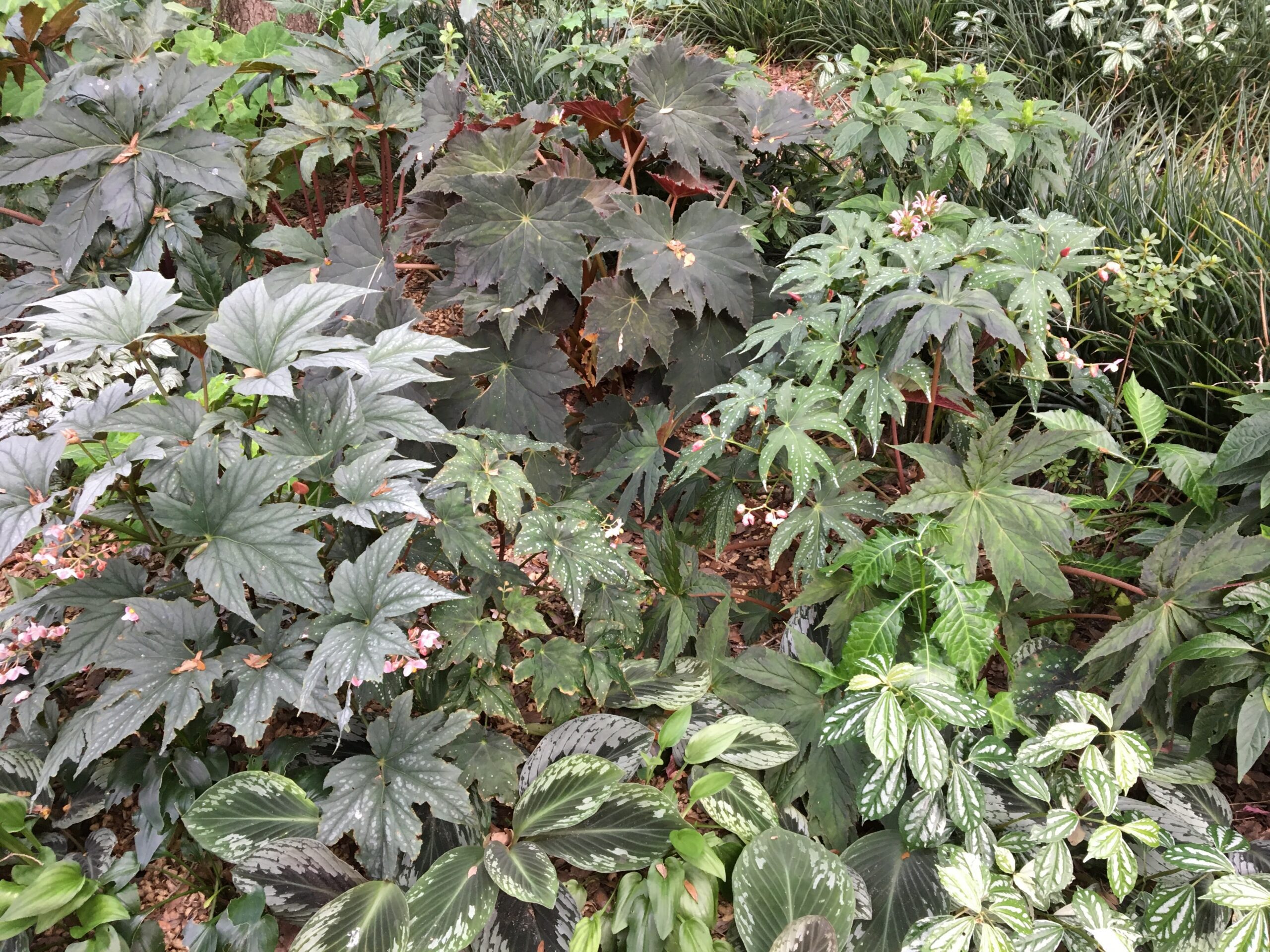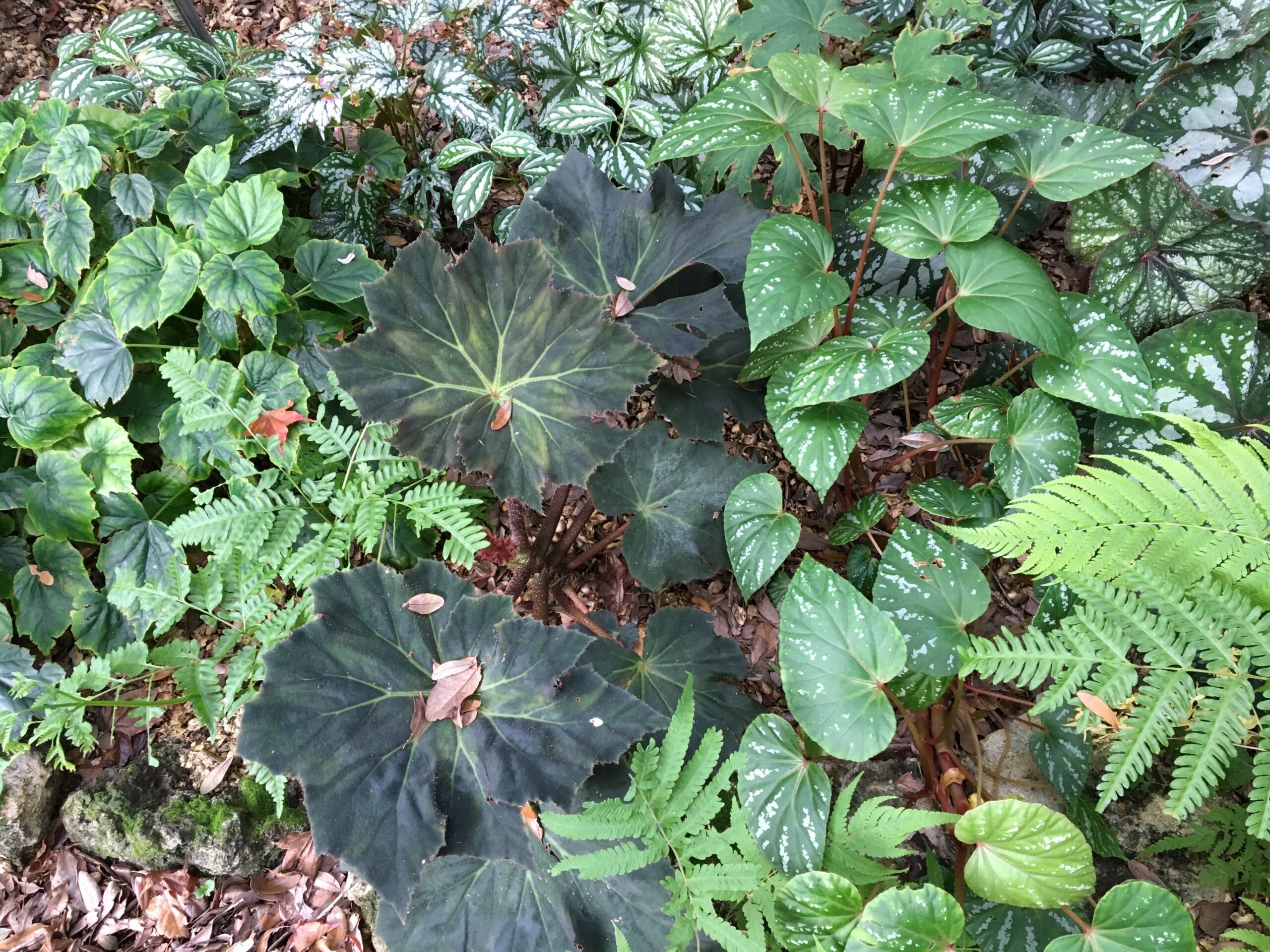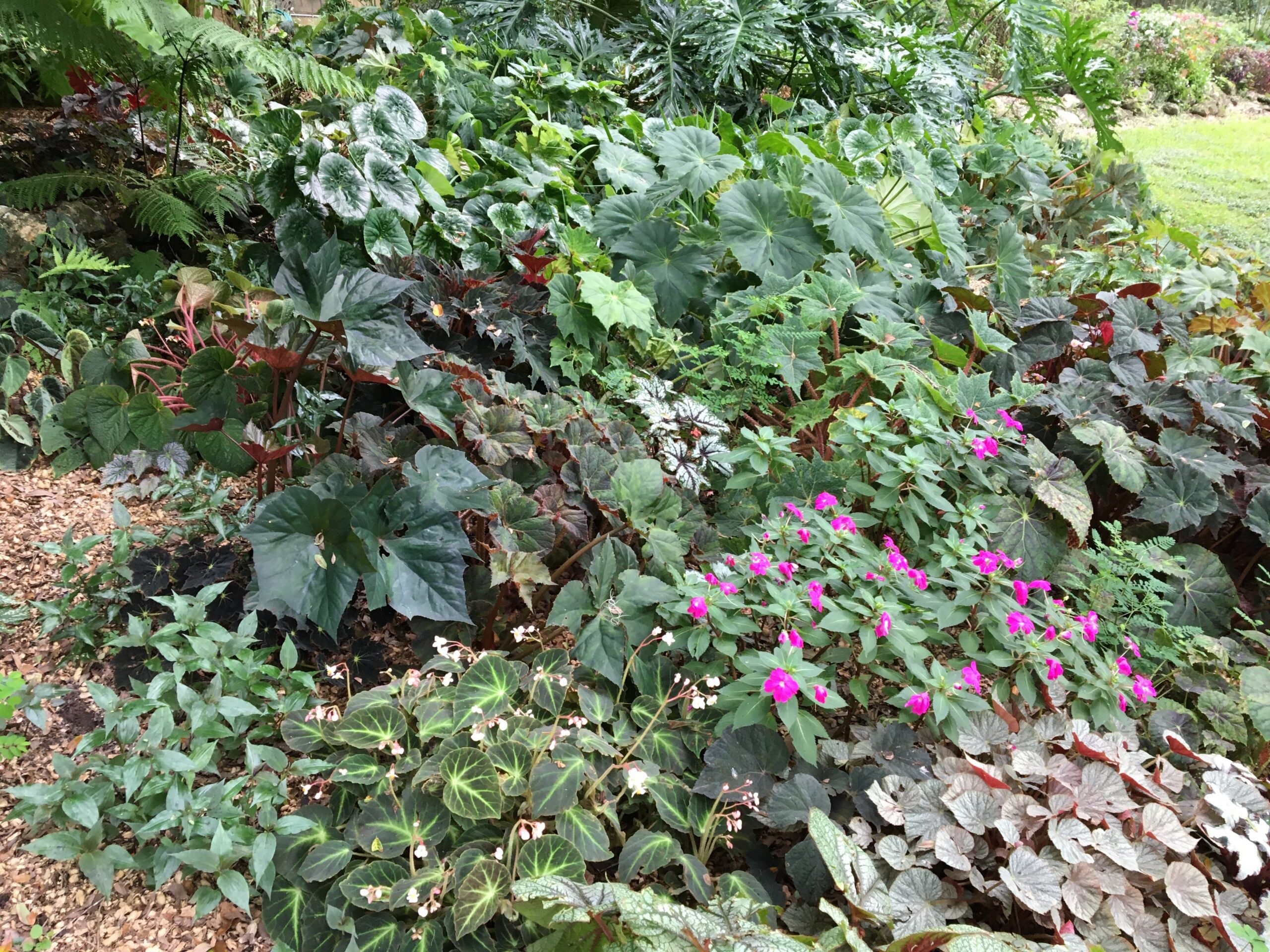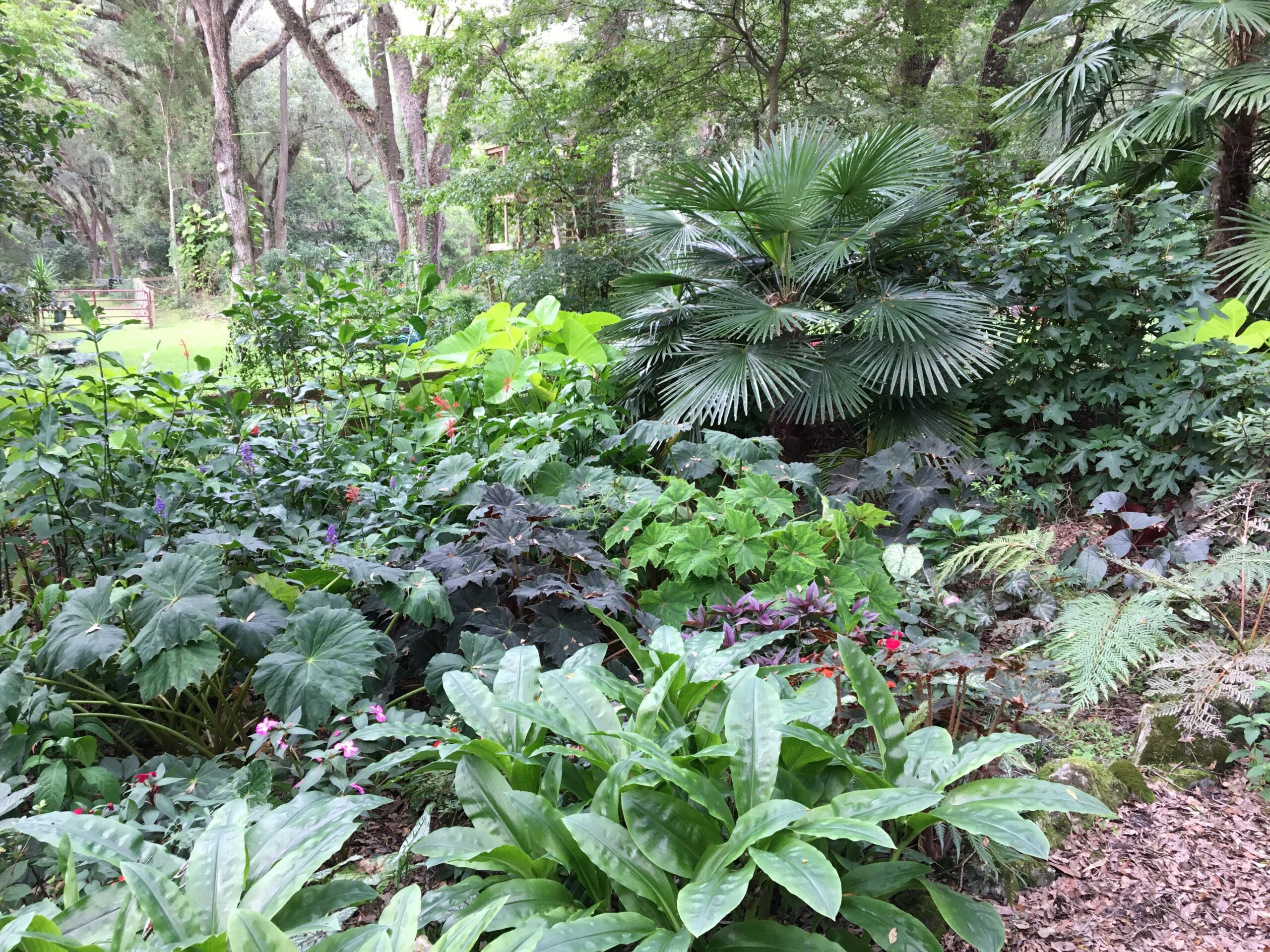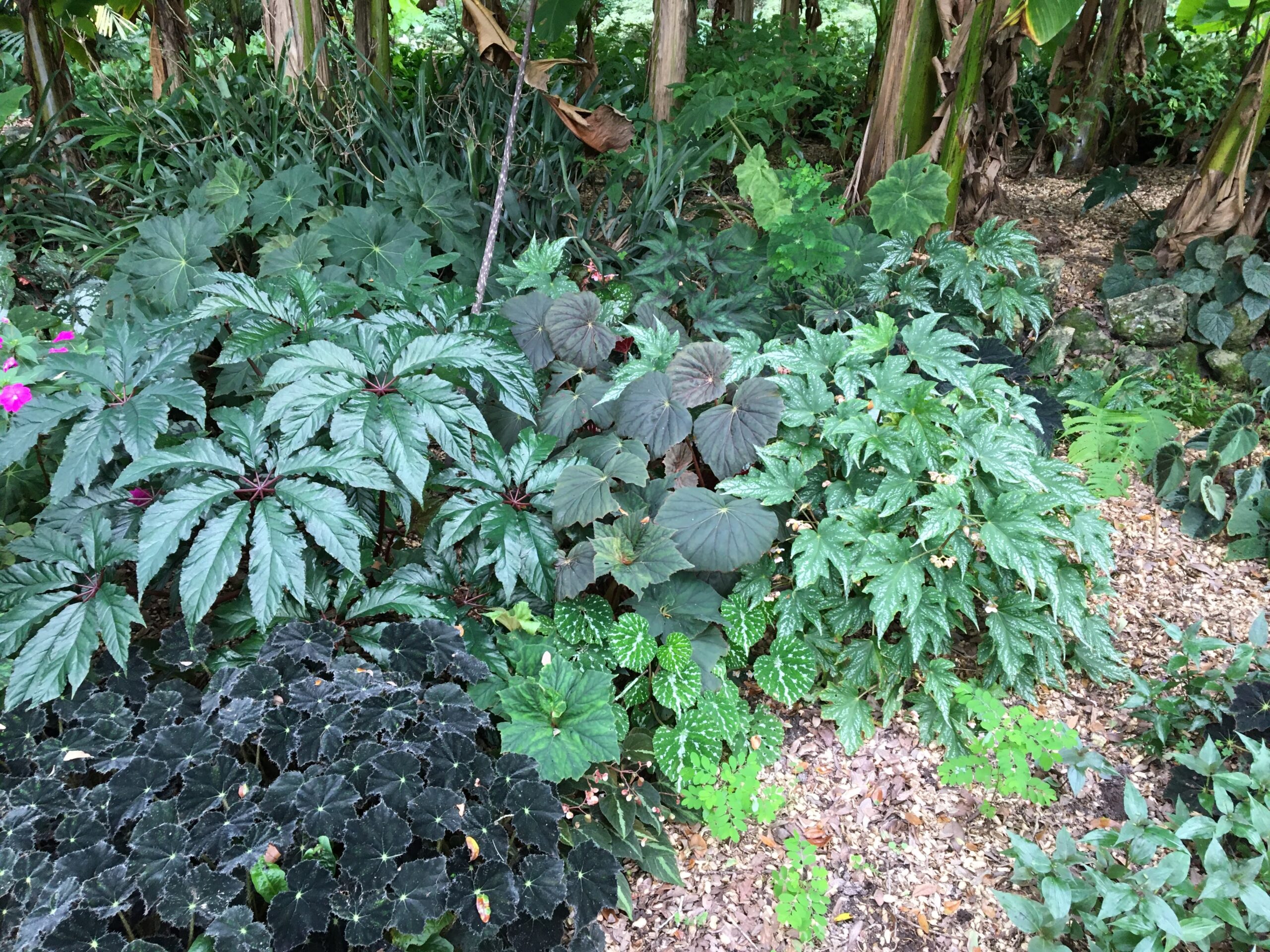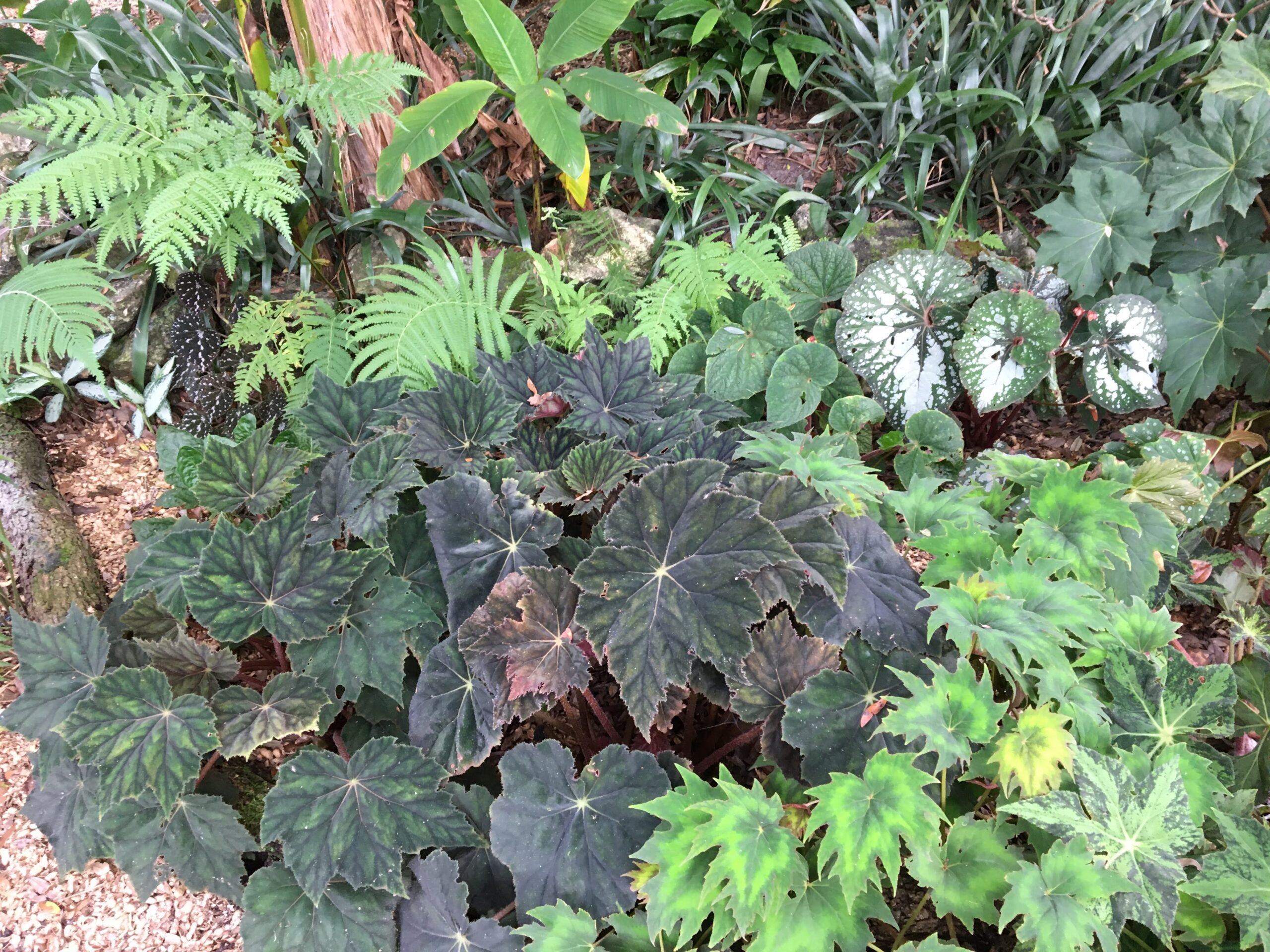Southern Florida has a climate unlike that of most of the country. Here semperflorens are grown mostly as annuals during the cool season, reaching their peak in February. Tuberous begonias will not survive our summer heat. Among the distinctive big and colorful-leaved types for the beginning hobbyist, rhizomatous begonias are best suited as low growing landscape plants. Some will do quite well when grown under favorable shade conditions in properly prepared beds.
Select Suitable Varieties
Interesting rhizomatous begonias suitable for outdoor growing can be seen at the Mounts Botanical Garden, 351 N. Military Trail in West Palm Beach in beds planted by the West Palm Beaches Branch of ABS. Some of the rhizomatous begonias that can be found locally and that do well here are:
-
- B. ‘Erythrophylla’, known as “Beefsteak”, which has large rounded leaves with a bronzy top surface and reddish color underneath.
- B. ‘Ricinifolia’, which has very large leaves resembling those of the castor bean plant. Its stem is reddish colored and delicate pink flowers emerge on an extended stem.
- B. nelumbifolia, which has large, rounded leaves that look like those of a water lily and produces large white flowers.
Prepare the Beds
While some begonias do well in half-day, morning sun, it’s a good idea to select a bed location that is shady.
If nematodes are a problem in your area, treat in advance. Three weeks before planting till the area well (about the depth of a garden spade or shovel head). Rake level and treat with a nemacide; the soil should be moist before application. Mix the material exactly as directed on the container. Drench the soil well. After application lay plastic sheeting, available at garden shops and hardware stores, over the treated area and cover edges with soil to make it air tight and wind resistant. Remove the cover after 48 hours. Do not plant for at least 3 weeks, which allows time for the gaseous material to evaporate from the soil.
The bed should be raised about 6″ above soil level. Use treated timbers or concrete blocks. fill to the top with cypress mulch (preferred for its acid properties) to provide the good drainage important for growing all begonias.
Planting
Carefully remove the plant from the container, avoiding damage to the roots. Set it in a nest in the mulch, filling in around the plant with a good potting mix. Pile mulch back around the plant to cover the root area.
Watering and Feeding
The bed should be kept damp, especially in summer, but never sloppy wet. Plants should be fertilized monthly using any good quality soluble or liquid fertilizer at half strength. This allows a constant level of nutrition.
The Occasional Freeze
Florida offers warm weather most of the time, but we do get an occasional freeze. Suggestions for dealing with the shock of low temperatures are given by H. Alton Lee in the November-December 1990 Begonian.

